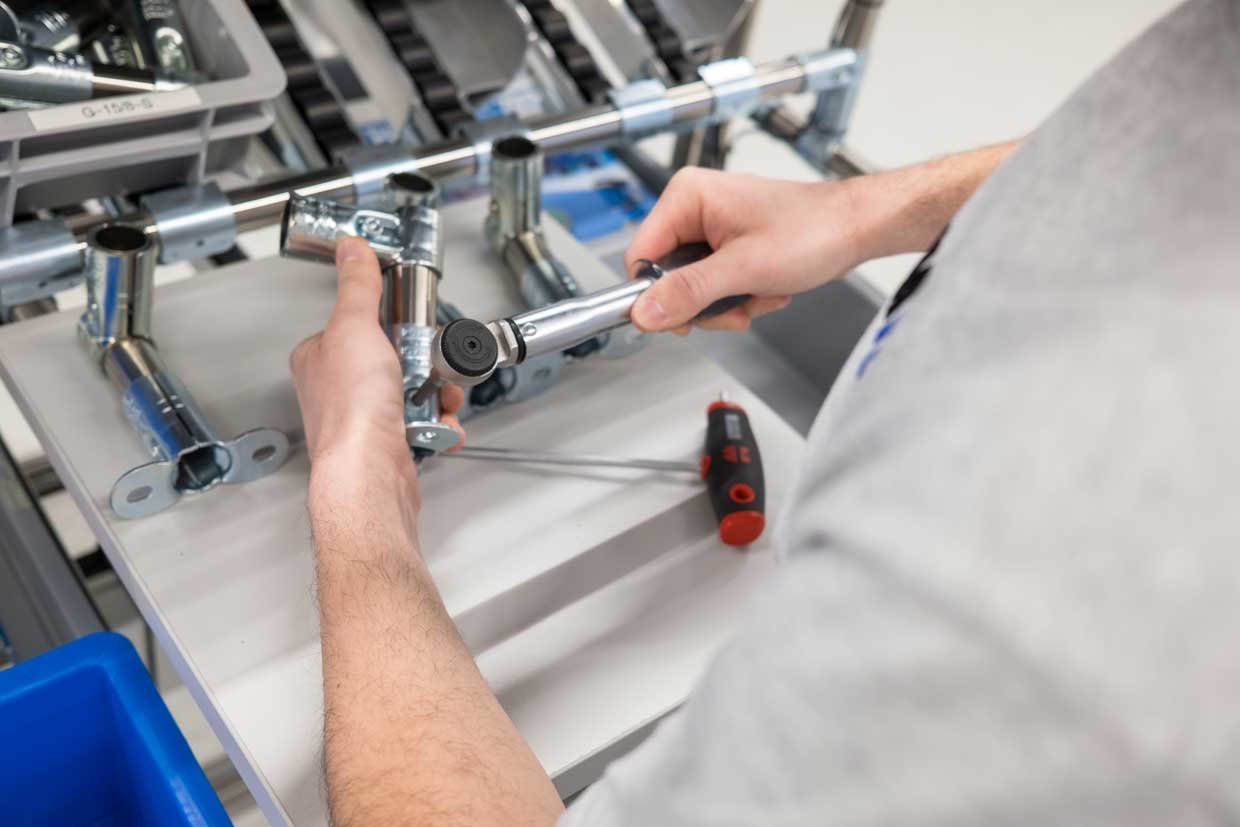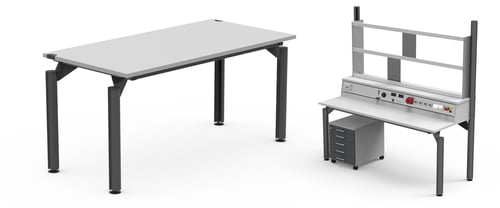In the evolving landscape of manufacturing process, the Smart Factory has become a symbol of efficiency, innovation, and competitiveness. It embodies the principles of Industry 4.0 by leveraging advanced technologies like automation, artificial intelligence (AI), and the Internet of Things (IoT). This article explores the concept, benefits, challenges, and technologies shaping the Smart Factory revolution.
What is a Smart Factory?
A Smart Factory is an interconnected manufacturing environment where machines, devices, and systems communicate with each other to optimize production processes. Unlike traditional factories, Smart Factories are data-driven, enabling real-time monitoring, analysis, and decision-making.

Core Features of a Smart Factory:
- Automation: The use of robotics, autonomous systems, and intelligent machines to perform repetitive and complex tasks.
- Connectivity: Seamless data exchange between devices, sensors, and systems through IoT.
- Data Analytics: Utilizing Big Data to uncover patterns, improve processes, and predict outcomes.
- Flexibility: Ability to adapt to changes in production requirements with minimal downtime.
- Intelligence: Integration of AI and machine learning for smart decision-making and process optimization.
Key Technologies Driving the Smart Factory

-
Internet of Things (IoT):
IoT connects devices and machines, enabling them to exchange data. Sensors embedded in equipment provide real-time insights into performance, energy usage, and potential issues. -
Artificial Intelligence and Machine Learning:
AI systems analyze vast amounts of data to optimize production, predict maintenance needs, and ensure product quality. Machine learning allows systems to improve over time based on data patterns. -
Digital Twins:
A digital twin is a virtual replica of a physical asset or process. It allows manufacturers to simulate, monitor, and optimize factory operations without disrupting the actual production. -
Advanced Robotics:
Collaborative robots (cobots) and autonomous mobile robots (AMRs) work alongside humans, enhancing productivity and safety. -
Cloud Computing:
Centralized data storage and processing through the cloud enable easy access and real-time updates across multiple locations. -
Edge Computing:
Edge computing processes data locally on devices, reducing latency and enhancing real-time decision-making. -
Additive Manufacturing (3D Printing):
Facilitates on-demand production, reducing inventory and enabling rapid prototyping.
Benefits of a Smart Factory
-
Enhanced Productivity:
Automation and intelligent systems reduce downtime, optimize workflows, and increase throughput. -
Improved Quality Control:
Real-time monitoring detects defects early, ensuring consistent product quality. -
Cost Efficiency:
Predictive maintenance minimizes equipment failures, and optimized resource utilization reduces waste. -
Sustainability:
Smart factories use energy-efficient processes and prioritize waste reduction, contributing to environmental goals. -
Customizability:
Flexible systems allow manufacturers to meet diverse customer demands, enabling mass customization without sacrificing efficiency. -
Faster Time-to-Market:
Streamlined processes and adaptive systems accelerate product development and delivery.
Challenges in Building a Smart Factory
-
High Initial Investment:
Deploying advanced technologies requires significant capital and resources. -
Cybersecurity Risks:
Increased connectivity exposes factories to potential cyber threats, necessitating robust security measures. -
Integration of Legacy Systems:
Transitioning from traditional setups to smart systems involves complex integration challenges. -
Workforce Transformation:
Employees need training to operate and manage advanced technologies, bridging the skills gap. -
Scalability:
Scaling smart systems across larger operations can be complex and resource-intensive.
Use Cases of Smart Factory Technologies
-
Predictive Maintenance:
Sensors monitor equipment health, predicting failures before they occur and reducing unplanned downtime. -
Intelligent Supply Chain Management:
Real-time data optimizes inventory management and ensures timely material availability. -
Collaborative Robots (Cobots):
Cobots handle tasks such as assembly and inspection, enhancing worker efficiency and safety. -
Energy Management:
IoT devices track energy consumption, optimizing usage and lowering costs. -
Augmented Reality (AR):
AR tools assist workers in assembly, maintenance, and training by providing real-time visual guidance.
Steps to Transition to a Smart Factory
.png?width=1080&height=1080&name=Steps%20to%20Transition%20to%20a%20Smart%20Factory%20(1).png)
-
Assess Current Operations:
Evaluate existing processes and identify areas for improvement. -
Define Objectives:
Set clear goals, such as reducing downtime, improving quality, or increasing productivity. -
Choose the Right Technologies:
Select technologies aligned with your goals and scalable for future needs. -
Develop a Roadmap:
Create a phased implementation plan to minimize disruptions during the transition. -
Invest in Workforce Training:
Empower employees with the skills needed to manage and operate advanced systems. -
Collaborate with Experts:
Partner with technology providers to ensure successful implementation and integration.
BeeWaTec and Smart Factory: Pioneering the Future of Manufacturing
At BeeWaTec, we specialize in solutions that enable businesses to embrace the Smart Factory concept and achieve their goals in the age of digital transformation. By integrating modular systems, automated solutions, and lean production principles, BeeWaTec bridges the gap between traditional manufacturing and the cutting-edge technologies driving Industry 4.0.

How BeeWaTec Aligns with Smart Factory Principles
-
Modular Solutions for Flexible Production Lines
BeeWaTec's modular systems are designed for adaptability, enabling seamless reconfiguration of the production line to meet changing demands. This aligns with the Smart Factory's focus on flexibility and scalability. -
Automation for the Shop Floor
Our expertise in automated guided vehicles (AGVs) and mobile robot systems helps businesses automate their shop floor operations, reducing manual interventions and optimizing material flow. -
IIoT and Connectivity
BeeWaTec provides solutions that integrate seamlessly with IIoT frameworks, enabling real-time data collection and analysis. This connectivity ensures that machinery and production systems are fully integrated and optimized for maximum efficiency. -
Lean Production Meets Smart Manufacturing
Combining lean production principles with advanced technology, BeeWaTec helps companies reduce waste and improve workflows while embracing the innovations of the industrial revolution. -
Digital Transformation Made Simple
Our tools and systems are designed to support businesses in their digital transformation journey, making it easier to implement intelligent, automated, and interconnected processes.
Empower Your Smart Factory Vision with BeeWaTec
BeeWaTec is more than a supplier; we are a partner in building smarter, more efficient factories. From optimizing assembly lines to enhancing shop floor operations, our solutions are tailored to meet the demands of the modern manufacturing landscape.
Ready to take the next step in creating your Smart Factory?

DOWNLOAD NOW!
Roadmap to a Smart Factory
Download this Roadmap to help you measure and optimize processes in your company effectively.
Download for freeRoadmap to a Smart Factory
After you have filled out and sent the form, you will receive the checklist immediately by e-mail.
Conclusion
The Smart Factory is at the heart of digital transformation, driving the next industrial revolution by leveraging IIoT (Industrial Internet of Things) and automation. With fully integrated systems, Smart Factories connect the production line, shop floor, and management seamlessly, enabling real-time decision-making and improved operational efficiency.
By automating machinery and embedding intelligence into manufacturing processes, Smart Factories enhance productivity, reduce costs, and deliver superior product quality. This transformation empowers businesses to stay competitive while addressing evolving market demands.
Embracing the Smart Factory concept is not just about upgrading technology; it’s about building a smarter, more agile, and sustainable future for manufacturing. Are you ready to revolutionize your operations with fully integrated solutions?
Find lean solutions for a flexible and Smart Factory
With our modular system you can implement any solution you need. Discover your possibilities, existing solutions or build your own material flow system with BEEVisio in 3D.




_Web_01_01.jpg?width=1240&name=Beewatec-3-(37)_Web_01_01.jpg)


